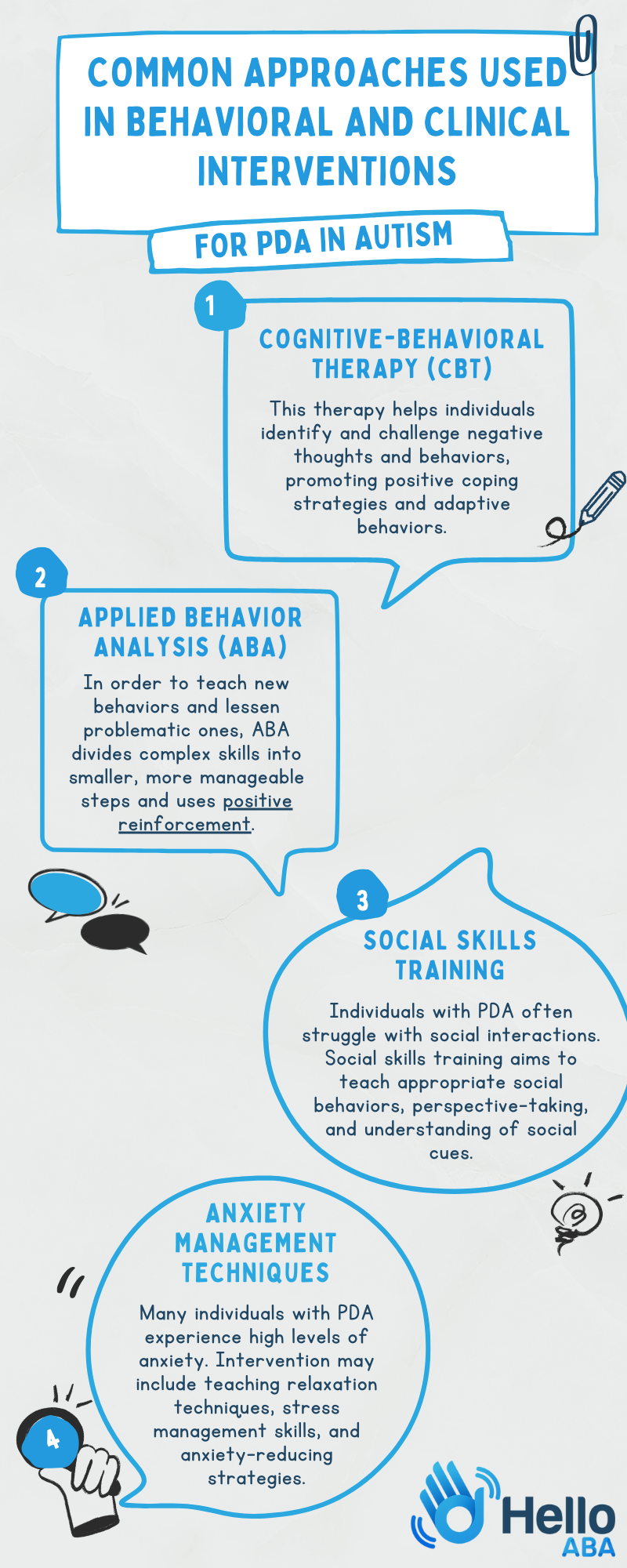Autism with Pathological Demand Avoidance (PDA) is a complex neurodevelopmental condition that presents unique challenges. Understanding PDA is crucial for developing treatment strategies. This article aims to shed light on the intricacies of PDA and explore various treatment approaches that can help those with this condition thrive.

The Concept of Pathological Demand Avoidance
Pathological Demand Avoidance (PDA) describes extreme avoidance behaviors and anxiety-driven control tactics often observed among some individuals on the autism spectrum. It is characterized by resistance to everyday requests, strong emotional and behavioral reactions struggles with persistence, and a tendency to control situations.
PDA as a Profile within Autism
It is essential to recognize that PDA is not a stand-alone diagnosis but rather a specific profile within the broader autism spectrum disorder (ASD). Individuals with PDA share common traits with others on the spectrum, but some prefer alternative terms like persistent drive for autonomy or pervasive drive for autonomy to describe it.
A review conducted in 2023 concluded that PDA is not considered a distinct subtype. Instead, it is recognized as a behavioral profile within the complex presentation of ASD. This understanding helps guide interventions and support strategies tailored to the specific needs of individuals with PDA while acknowledging the autism context.
Treatment Approaches for PDA
Treating Autism with Pathological Demand Avoidance (PDA) requires a tailored approach that respects the individual’s unique needs and sensitivities. While there’s no one-size-fits-all solution, various strategies have shown promise in managing PDA symptoms and improving quality of life.

Early Intervention Strategies
Early intervention in the preschool and primary years is crucial for children with complex developmental differences, including PDA. While there are no empirical studies specifically focusing on PDA treatment strategies, clinical advice suggests that early intervention involving a range of medical and allied health clinicians can be beneficial.
The goal of early intervention is to provide support to children with PDA and their families. It typically involves a multidisciplinary approach, bringing together professionals such as psychologists, occupational therapists, speech therapists, and educators to create individualized intervention plans.
Early intervention strategies may include:
- Social skills training: Helping children learn and practice social skills, such as turn-taking, sharing, and understanding social cues.
- Communication support: Assisting individuals with PDA in developing effective communication skills, including expressive and receptive language skills.
- Sensory integration therapy: Addressing sensory sensitivities and helping individuals with PDA regulate their responses to sensory input.
- Emotional regulation techniques: Teaching strategies to manage and express emotions in a healthy and constructive manner.
Behavioral and Clinical Interventions for PDA in Autism
Behavioral and clinical interventions can also be effective in helping individuals with PDA manage their symptoms and improve their quality of life. These interventions are typically delivered by professionals such as psychologists, occupational therapists, psychiatrists, or pediatricians who specialize in autism and PDA.
Some common approaches used in these interventions include:

Support Strategies for Individuals with PDA
In addition to behavioral and clinical interventions, there are specific strategies that can help manage their unique needs. These strategies focus on trigger monitoring and management, as well as building self-determination skills.
Trigger Monitoring and Management
Monitoring and managing potential triggers is crucial for individuals with PDA. Recognizing and understanding what triggers anxiety and demand avoidance behaviors can help prevent or minimize challenging situations. Strategies for trigger monitoring and management may include:
- Identifying common triggers: Working closely with the individual to identify specific situations, tasks, or demands that consistently lead to anxiety and avoidance behaviors.
- Modifying environments: Creating a calm and structured environment that minimizes sensory overload and reduces anxiety-inducing stimuli.
- Establishing routines and predictability: Providing a clear and consistent routine that offers stability and predictability, can help individuals with PDA navigate their daily lives with less stress.
- Breaking tasks into manageable steps: Breaking down tasks into smaller, more manageable steps can help reduce anxiety and make it easier for individuals with PDA to approach and complete them.
- Using visual aids: Utilizing visual schedules, charts, or timers can help individuals with PDA understand expectations and manage their time effectively.

Building Self-Determination Skills
As children with PDA transition into later primary school and adolescence, it becomes increasingly important to focus on building self-determination skills. These skills empower individuals to engage in school and community activities. Strategies for building self-determination skills may include:
- Encouraging choice-making: Providing opportunities for individuals with PDA to make choices within appropriate boundaries helps foster independence and self-confidence.
- Supporting self-advocacy: Teaching individuals with PDA how to effectively communicate their needs, preferences, and concerns empowers them to advocate for themselves in various settings.
- Developing problem-solving skills: Guiding individuals with PDA through problem-solving exercises helps them learn how to approach challenges, consider different solutions, and make informed decisions.
- Promoting self-reflection: Encouraging individuals with PDA to reflect on their own thoughts, emotions, and behaviors can enhance their self-awareness and facilitate personal growth.
- Providing opportunities for social interaction: Facilitating social interactions and connections with peers can help individuals with PDA develop important social skills and build supportive relationships.
Challenges and Considerations for PDA
Understanding and addressing PDA in autism also involve specific challenges and considerations. These challenges include the potential for misdiagnosis and overlapping conditions, as well as addressing mental health challenges that may arise.
Misdiagnosis and Overlapping Conditions
Misdiagnosis can be a challenge when it comes to identifying PDA as a profile within autism. A 2018 study found that there was not enough evidence to support PDA as a syndrome separated from autism. Additionally, a 2023 review concluded that PDA can’t be separated from ASD.
Children with autism who fit the PDA profile may exhibit extreme avoidance of life’s daily demands. However, it is important to note that not every person with autism has PDA. Therefore, it is crucial to consult with a healthcare professional experienced in autism to ensure an accurate diagnosis.
Addressing Mental Health Challenges
Individuals with PDA may face additional mental health challenges that need to be addressed as part of their intervention plan. PDA can lead to increased levels of anxiety, which can impact overall well-being. It is important to provide support and interventions that address these challenges.
One effective approach is to develop strategies that help individuals with PDA manage anxiety and social interactions. By teaching different skills, such as emotion regulation techniques or social communication strategies, individuals with PDA can learn to navigate their daily lives effectively.
Hello ABA offers comprehensive autism programs in Maryland, including specialized ABA therapy for individuals with PDA. Our experienced team creates personalized treatment plans to address the unique needs of each child. We also focus on building independence and communication abilities.
Contact us today to learn more about how we can support your child’s journey!






